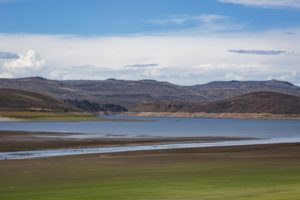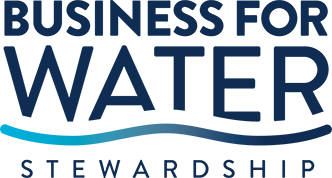When the Numbers Just Don’t Add Up - Water Risk in the West and What Companies are Doing to Prepare for Shortages
 When Colorado River delegates met in Santa Fe, NM in 1922 to negotiate the Colorado River Compact things were a little different. Women had just received the right to vote in 1920, Lenin had just created the USSR and Warren Harding was the U.S. President. The rivers in the Southwest were also flowing at higher rates than they are today – posing a mathematical challenge for water managers today. The 1922 compact, which allocates how much water can be taken from the river by various states and users, was written assuming about 17 million acre feet of flows each year, while today we see only about 14 million acre feet, posing the challenge of over-allocation. These acre feet are divided between 7 states and Mexico, but with less water, the math isn’t adding up. The system does have its savings accounts in reservoirs, but all are dramatically low. Lake Mead is only 38% full and Blue Mesa is 39% full. And a new study finds over the last 100 years, the river’s flow has decreased by more than 15 percent.
When Colorado River delegates met in Santa Fe, NM in 1922 to negotiate the Colorado River Compact things were a little different. Women had just received the right to vote in 1920, Lenin had just created the USSR and Warren Harding was the U.S. President. The rivers in the Southwest were also flowing at higher rates than they are today – posing a mathematical challenge for water managers today. The 1922 compact, which allocates how much water can be taken from the river by various states and users, was written assuming about 17 million acre feet of flows each year, while today we see only about 14 million acre feet, posing the challenge of over-allocation. These acre feet are divided between 7 states and Mexico, but with less water, the math isn’t adding up. The system does have its savings accounts in reservoirs, but all are dramatically low. Lake Mead is only 38% full and Blue Mesa is 39% full. And a new study finds over the last 100 years, the river’s flow has decreased by more than 15 percent.
Recent reports from the U.S. Bureau of Reclamation confirm that the Colorado River Basin has avoided shortage for 2019, but has at least a 50/50 chance of moving into a shortage declaration in 2020. So, what does this mean for the business community and how can we plan for these shortages? READ MORE HERE
BWS has just completed a study looking at corporate water use in Arizona and Colorado, concluding that many businesses aren’t waiting for water shortages to plan and prepare for less water. In fact, nearly 95% of businesses surveyed say that water availability and supply are their biggest water concerns. The study finds that key commercial sectors from food & beverage, to technology, to mining and power generation, are leading the way on water stewardship practices in the region.
ARIZONA
- Of the 32 Arizona companies across seven major sectors evaluated, 44% have established water use goals, with annual water savings ranging from 2-5%
- The top water stewardship practices identified across Arizona companies include: 1) Water reuse/recycling; 2) Community engagement/partnerships; 3) Operational modifications; 4) Technology/automation (remote monitoring); and 5) Landscaping.
COLORADO
- Of the 35 Colorado companies across three major sectors evaluated, 49% have established water use goals, with annual water savings ranging from 4-10%
- The top water stewardship practices identified across Colorado companies include: 1) Technology/automation (remote monitoring); 2) Water reuse/recycling; 3) Community engagement/partnerships; and 4) Operational modifications.
CORPORATE WATER LEADERS
 Shamrock Foods has committed to reclaiming and recycling 100 percent of all water used on the Shamrock farm for irrigation and other facility uses
Shamrock Foods has committed to reclaiming and recycling 100 percent of all water used on the Shamrock farm for irrigation and other facility uses
 Intel will restore 100% of global water use by 2025 by funding collaborative projects to support local watersheds that restore water in quantities equivalent to the water consumed by Intel
Intel will restore 100% of global water use by 2025 by funding collaborative projects to support local watersheds that restore water in quantities equivalent to the water consumed by Intel

Danone set a 2020 goal to reduce water consumption in factories by 60% versus a 2000 baseline
This research documents that companies have the potential to reduce water consumption between 3-10% annually by using existing technologies and practices. However, a strengthened policy and management environment will be the tipping point needed to incentivize more companies to engage in water stewardship and to catapult water conservation, reuse and restoration by the private sector to a higher level that will benefit all stakeholders and the environment. Check out our project bank to learn more about projects companies can invest in, and stay tuned for communications from us that showcase best practices and provide opportunities to advocate for policies to further encourage business sector water stewardship across the West.
